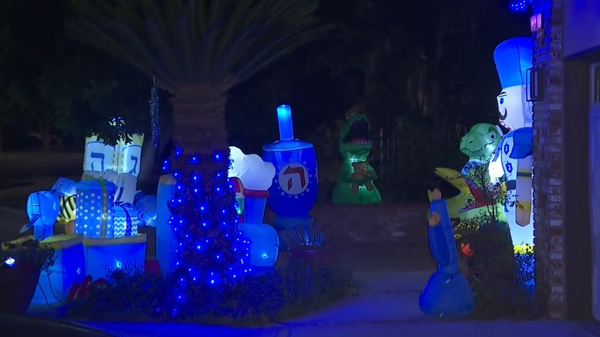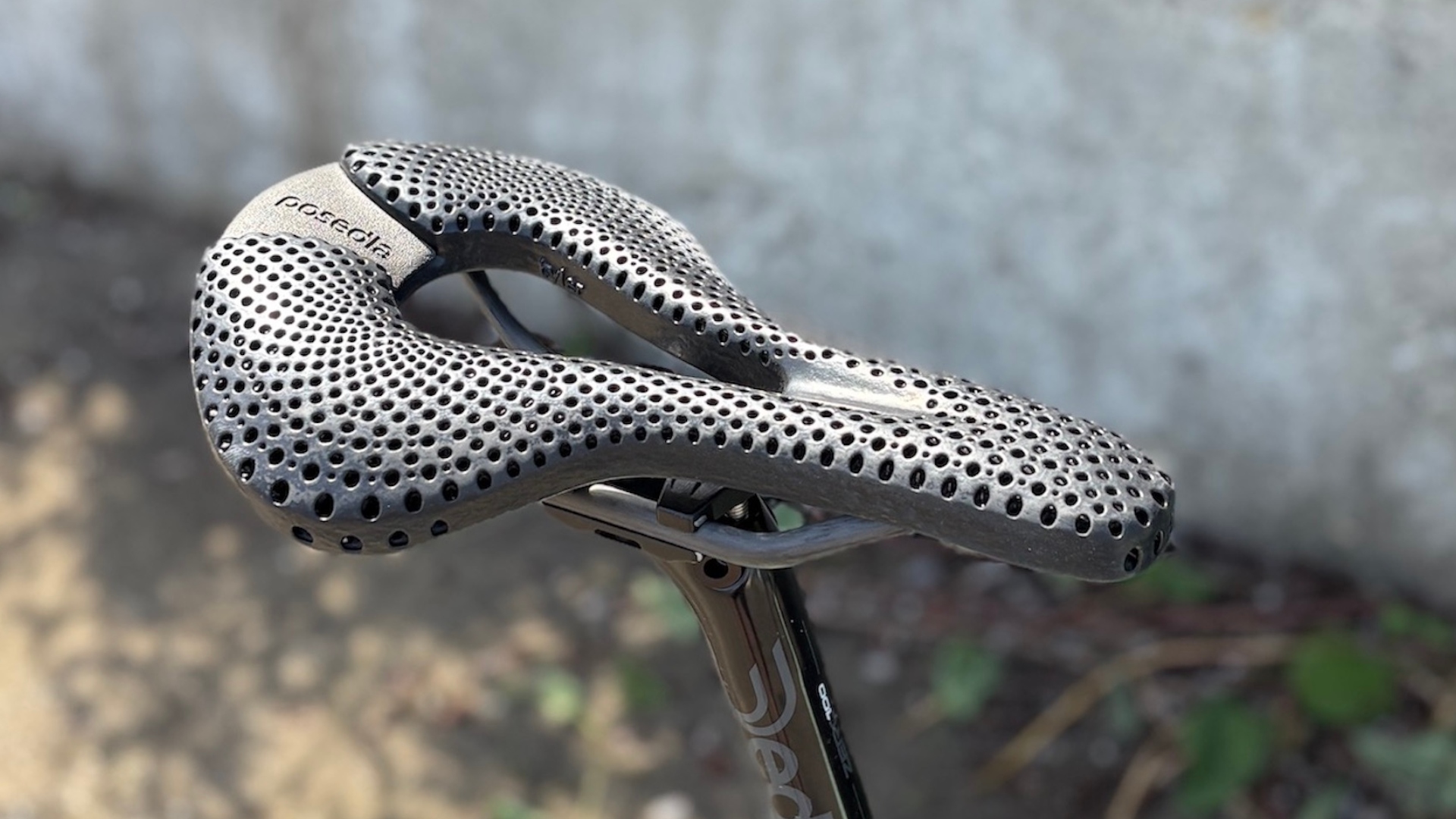
I think it’s fair to say that the cycling industry has wholeheartedly embraced additive manufacturing, a.k.a 3D printing. While 3D printing isn't always practical for mass production, it’s proving ideal for anything custom. Saddles, long a point of contention for riders, are now being tailored to individual anatomy with remarkable precision. Posedla, based in the Czech Republic, is not the only company making these custom saddles, but it does have a unique approach: it has developed a process that allows customers to conduct a fitting from the comfort of their own homes. Each customer receives what Posedla calls its “Smiling Butt Kit,” which is used to make a rear end imprint that forms the basis of each custom saddle.
I was able to try out this unique process, and after photographing it thoroughly—the imprint kit, not my rear end—I sent the photos to Posedla so that the company could create a unique saddle for me, based on my anatomy and riding preferences. This entire process took about six weeks, start to finish.
Design and construction
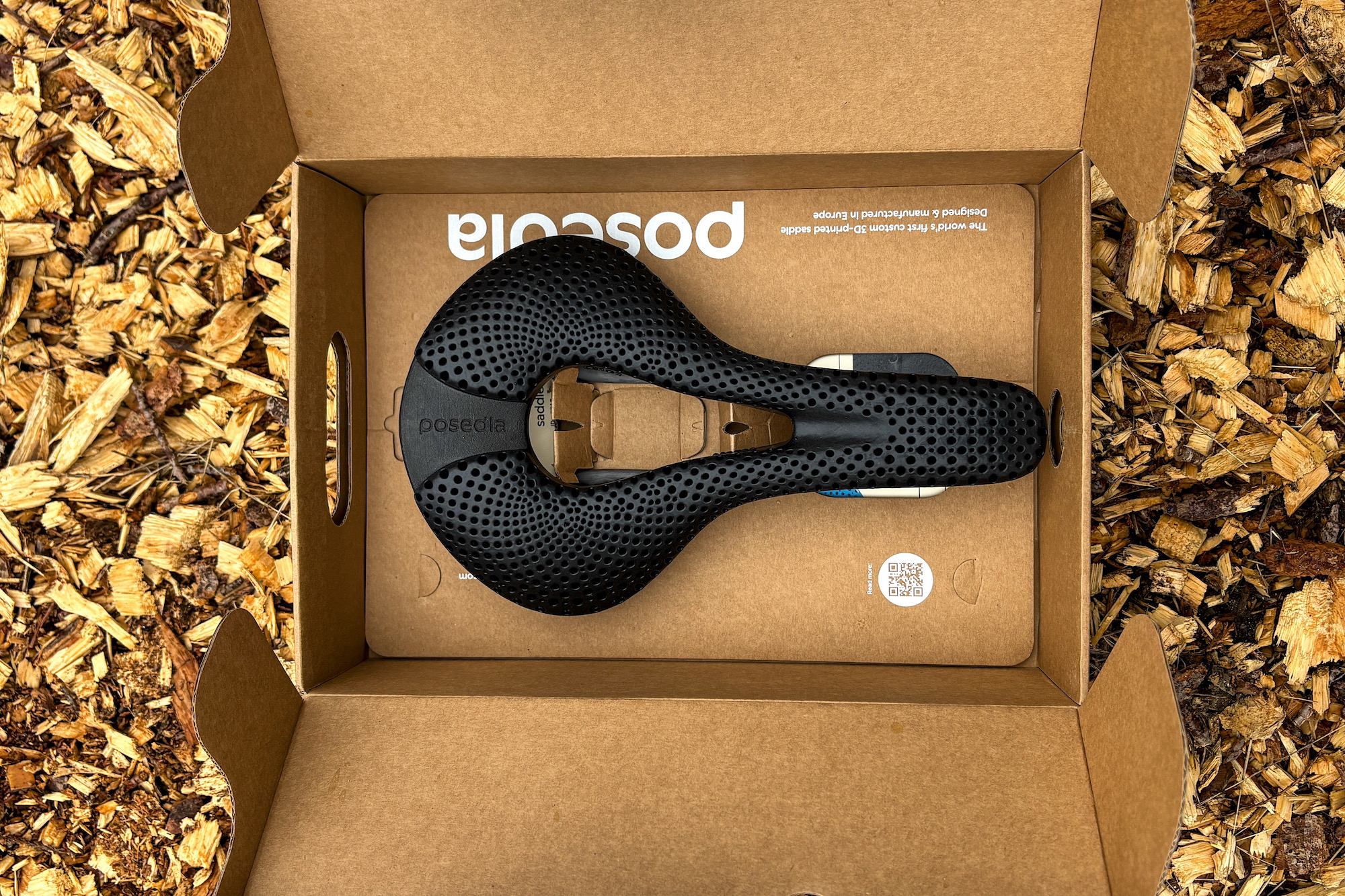
Posedla’s Joyseat 2.0 padding is made of variable-density TPU, which is then glued to a carbon shell and rails. Fabrication is done in Varnsdorf, North Bohemia in the Czech Republic, close to the German border. The saddle is printed using “MultiJet Fusion technology,” which is a form of 3D printing in which the raw material starts in powder form. Slowly, the printer builds up the lattice-work structure that becomes the saddle top, after which (in Posedla’s words) it “undergoes a series of post-processing steps. This includes thorough cleaning, sandblasting, and powder removal. A vapour smoothing treatment is then applied to improve surface finish and ensure the final product meets both performance and aesthetic standards.”
Because the top and base are manufactured separately, Posedla has the ability to replace this top portion if it wears out, reusing the carbon rails and shell. This also makes crash replacement a feasible option, should the need arise. The final product ships in elegantly designed recycled cardboard packaging, and arrives with a data sheet of all of the customer’s inputs and preferences.
Specs
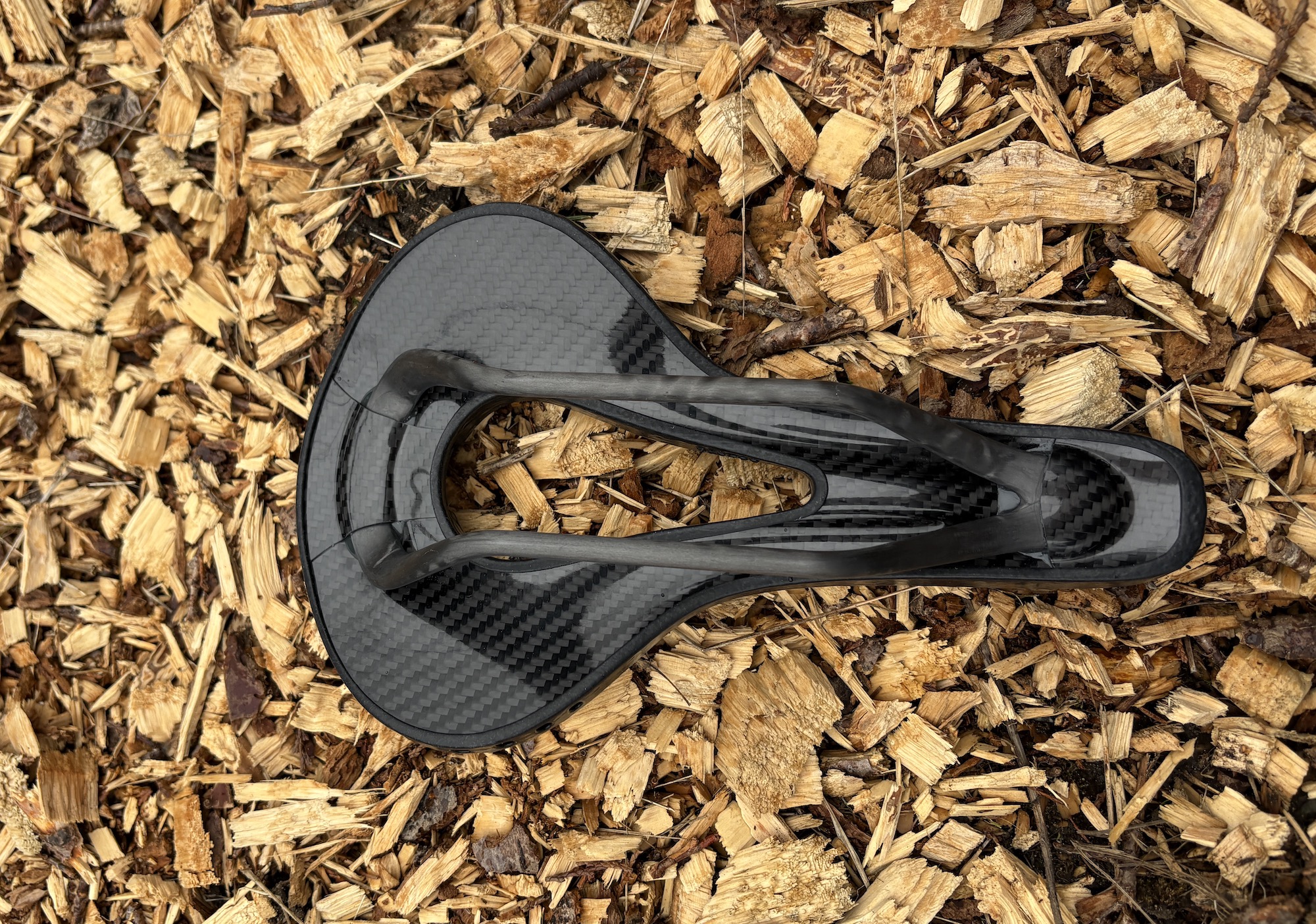
- Dimensions: 156.5 mm wide x 251 mm long, as tested. (Posedla can manufacture saddles from 130–170 mm, depending on sit bone width.)
- Weight: 175 grams, as tested
- Rails: Carbon, 7 x 9 mm
- Price: $490/£390
- Rider weight limit: 100 kg
The Ride
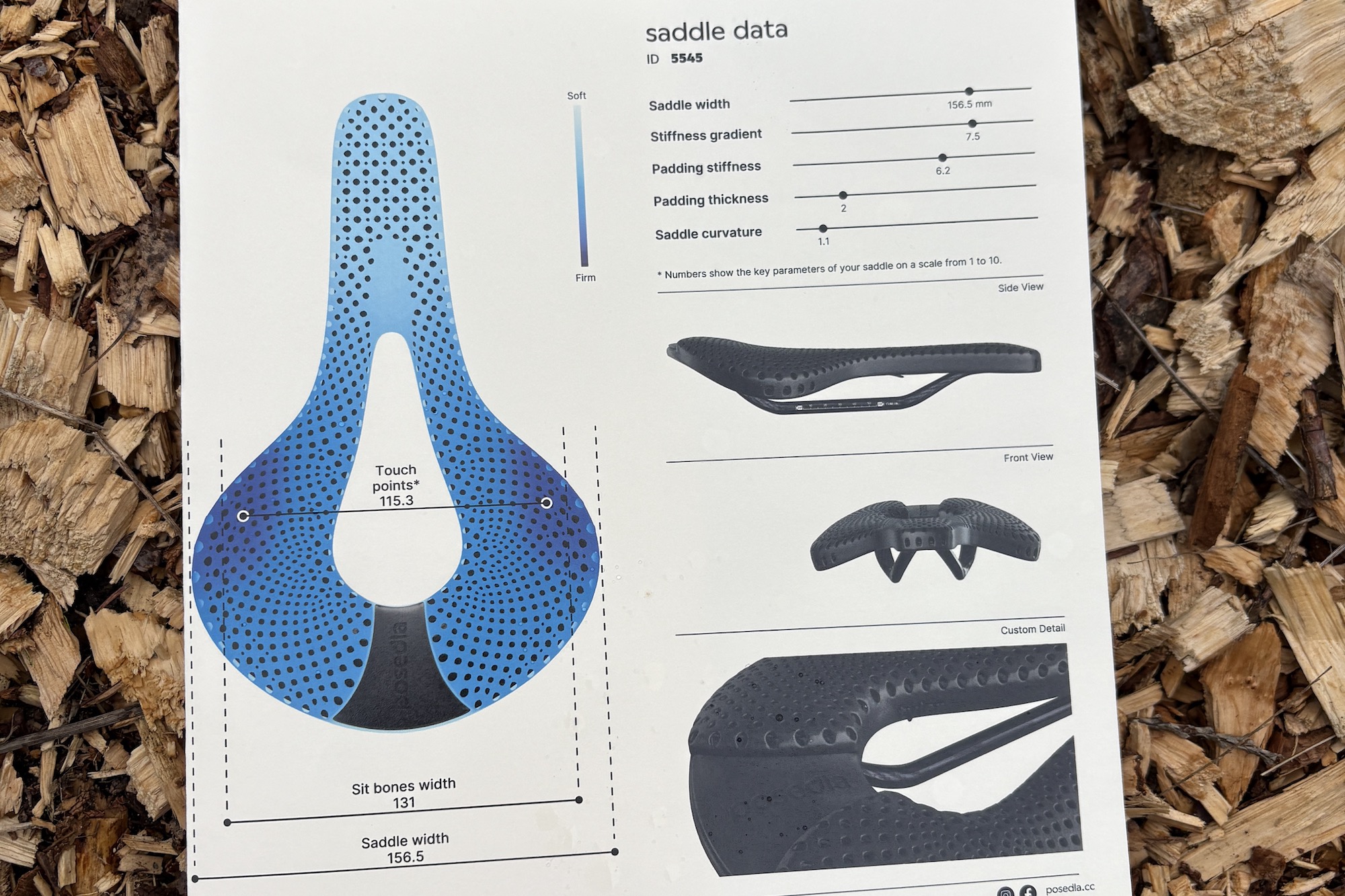
If you ask anyone I ride with regularly, they’ll tell you that I’m exceedingly fastidious about bike fit. If anything feels remotely off, I will stop and fix it. I think this makes me a good product tester—I tend to notice subtle differences in ride characteristics—though it does make me a bit of a pain to ride with. Anytime I swap something out for testing, be it a crankset, handlebar or saddle, it takes me a few rides to get it dialled in.
I was expecting the same with Posedla’s Joyseat. Since its dimensions differ slightly from the saddle I typically use—my go-to is Ergon’s SR series—I had to make an estimate for the fore-aft location and saddle angle. But from the first ride, I got along harmoniously with it, almost—stay with me here—as if it were made for me.
Before I delve into ride impressions, however, I would like to provide a more detailed explanation of the preceding process. The unusually-named “Smiling Butt Kit” arrived at my door a few days after I placed my order. The kit contains a special type of imprintable foam in a box, along with very specific instructions for how to sit on it (tip: wear underwear). Once the imprint is complete, the final step is to photograph the kit from specific angles and upload these photos to Posedla’s website.
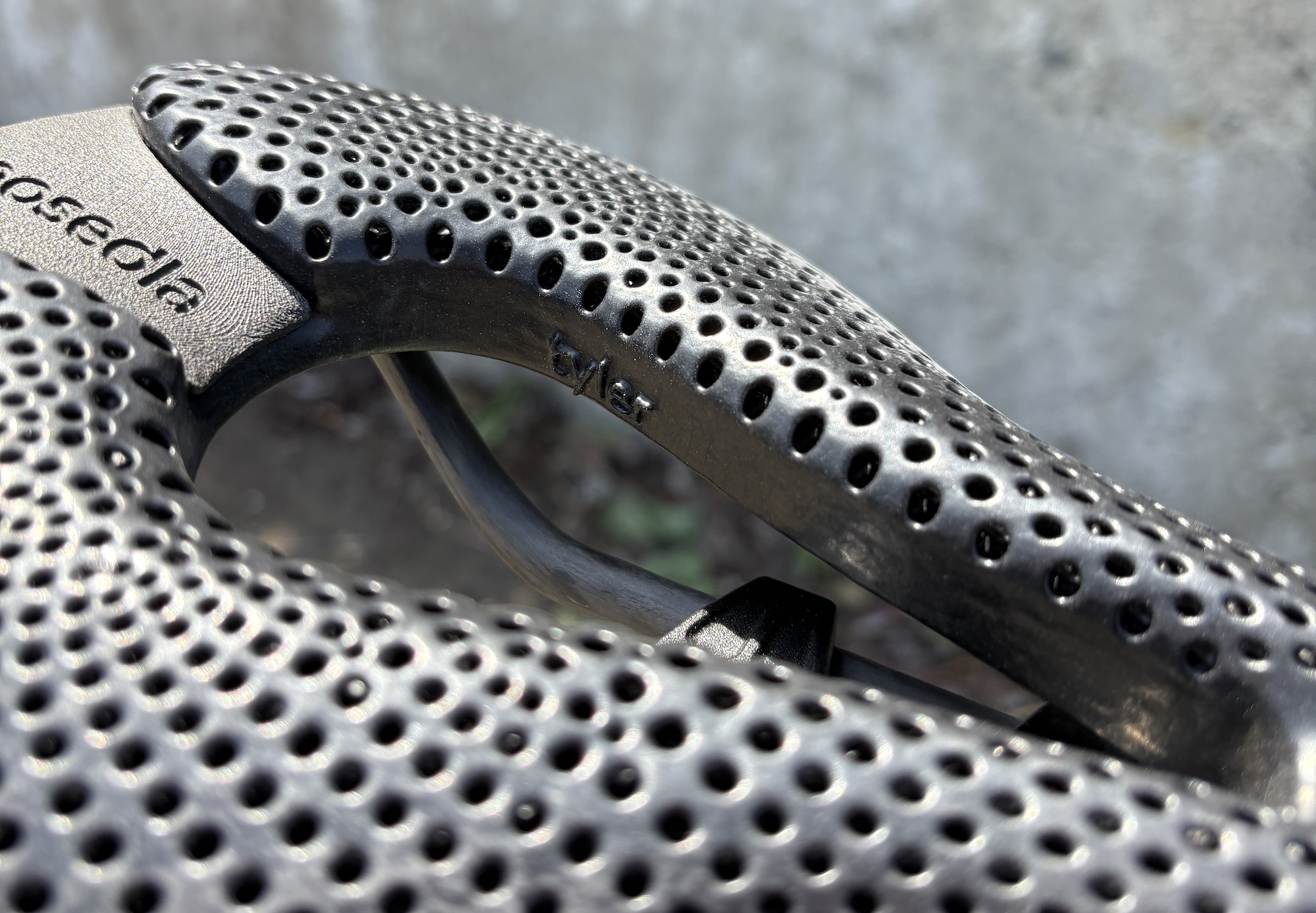
Around the perimeter of the imprint box are a series of QR code-style patterns that Posedla uses to process the images using photogrammetry techniques. According to Jiri Duzar, Posedla’s co-founder, “Our proprietary algorithm is the core of our customisation process. We use multiple-angle imaging to reconstruct a 3D model of the rider’s sit bones. The images are analysed using specific markers, which help determine precise dimensions and distances.”
From this process, Posedla is then able to create a personalised saddle, both in terms of foam density and placement, as well as shell width and shape. My saddle arrived with an info sheet detailing width, stiffness, padding, and curvature and showing where my sit bones should rest to be properly supported.
I tested the Joyseat over the course of roughly two months and several hundred kilometres. It’s grippier than a normal saddle, though the surface of the saddle is smoother and more uniform than other 3D printed saddles I’ve tested. My saddle is quite firm, though this is likely based on my inputs and not necessarily reflective of all of the saddles Posedla manufacturers.
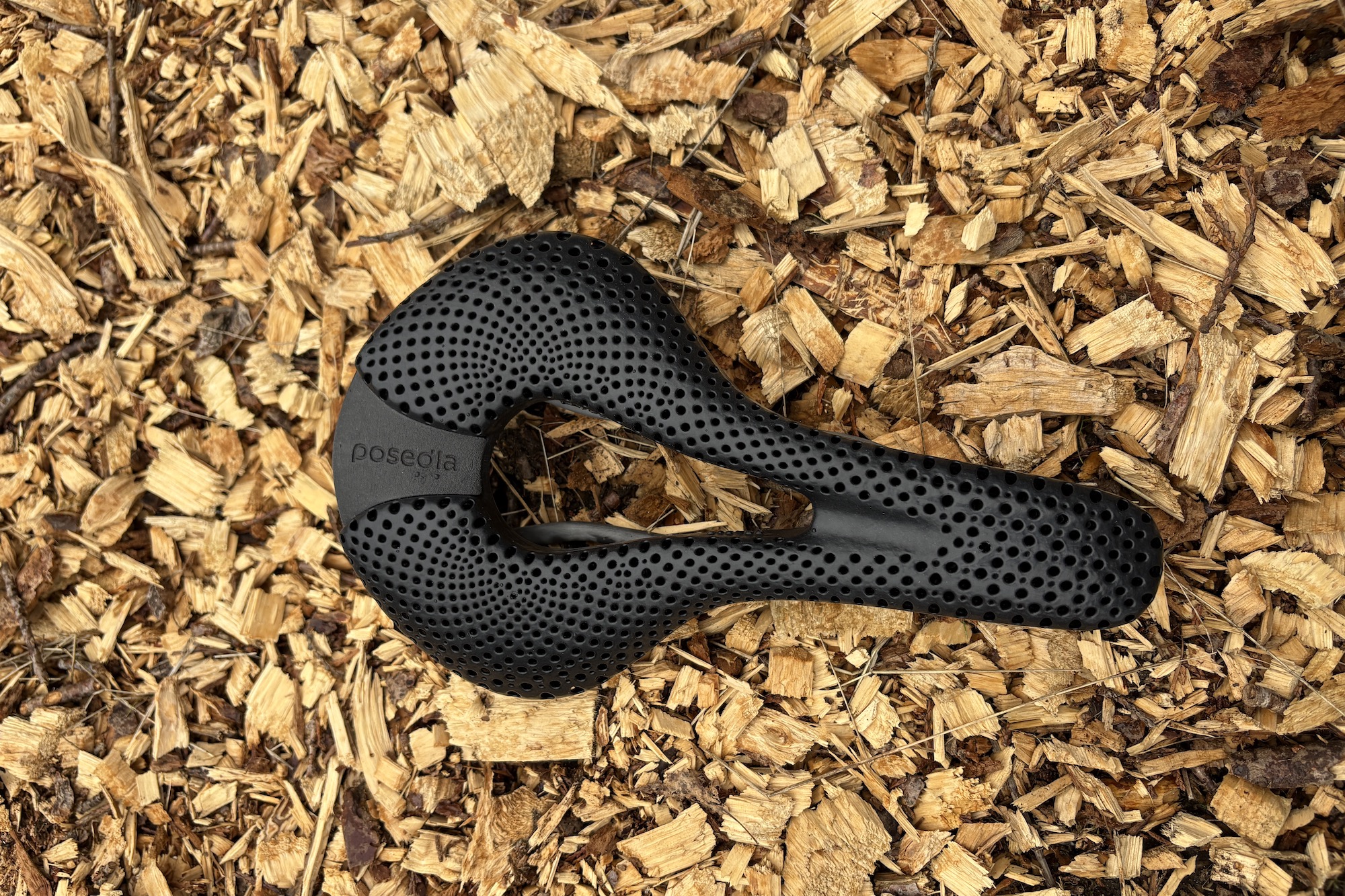
As mentioned before, I got along well with the saddle from the get-go. I assumed I’d need to be very precise with the setup to be comfortable on it, but I found it worked well even as I adjusted my saddle placement. I was extremely impressed with the sit bone support. This firm platform allowed me to put out power efficiently, and I had multiple people comment on the fact that I looked especially smooth on the bike during the testing period.
Put simply, the design works really well for me to produce power. Often during testing, I was surprised by the numbers on my power meter. On short rides, I felt great. On longer rides (over 2.5 hours), however, I started to notice the saddle’s firmness and coarse texture through my chamois, which never caused issues, but wasn’t entirely comfortable either.
My interpretation of this situation is that the saddle design encourages you to stay in one place, and I prefer to move around. For those who like to slide a bit in the saddle, or change angles in undulating terrain, the saddle might have too narrow of a sweet spot to be comfortable on longer rides. It works best for someone who likes to lock in on a single spot and stay there. I think I could get used to this over time, but it’s different from what I’m accustomed to with more traditional saddle construction.
Also worth noting is that it is impossible to test a Posedla saddle before purchasing one, although this is true of all custom items. When I asked Duzar about this, he said, “Most riders find that their custom-fitted saddle significantly improves their comfort compared to off-the-shelf models. We offer a 60-day return guarantee, so riders can purchase in confidence knowing that we'll look after them if they find something in the final product that doesn't match their expectations.”
The Joyseat isn’t cheap, so this should offer some peace of mind if you’re on the fence about ordering.
Value and Conclusion
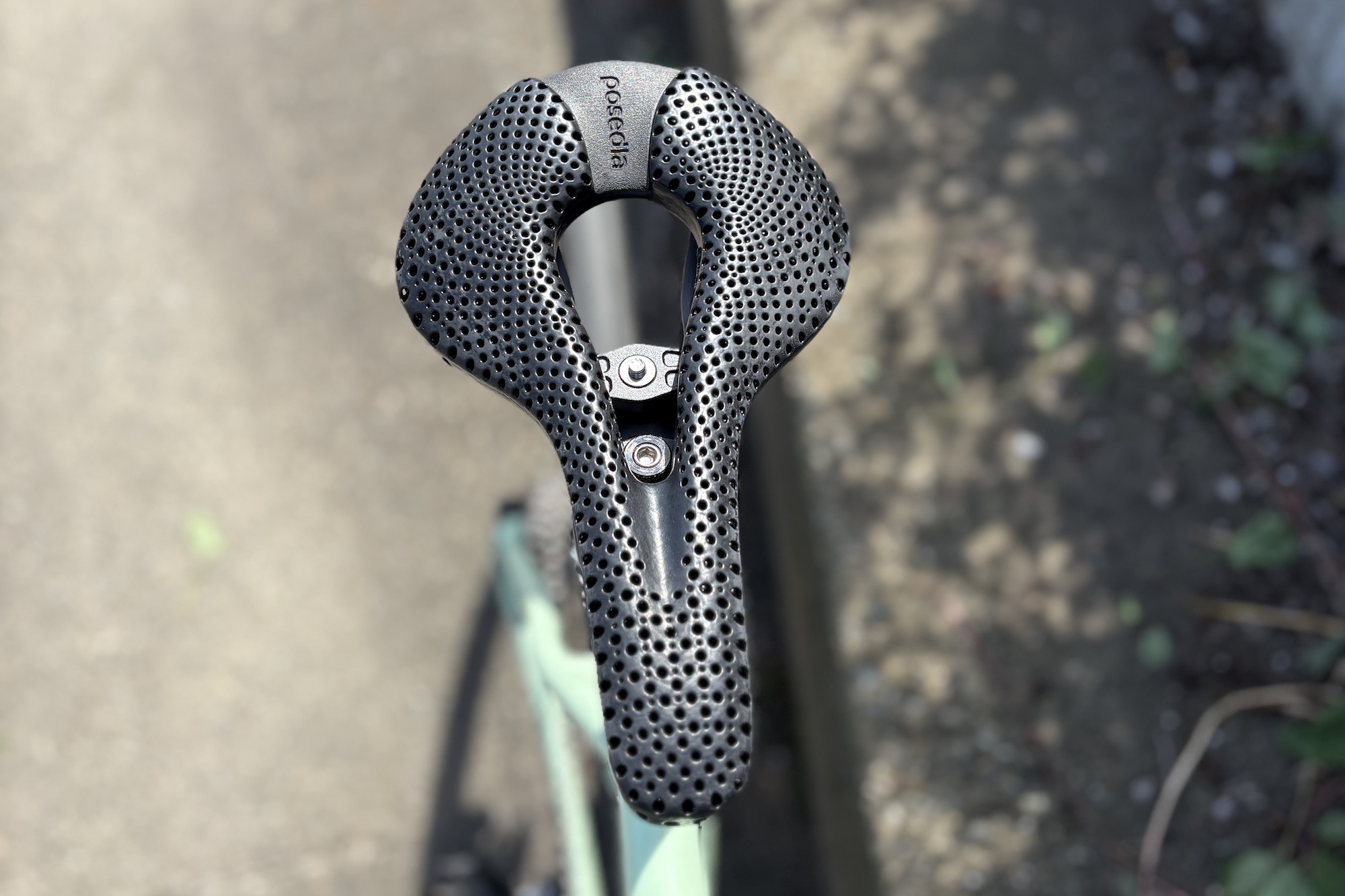
There’s no getting around the fact that Posedla’s Joyseat 2.0 is expensive. However, it’s priced within the range of other top-end saddles, like Specialized’s S-Works Power with Mirror ($449/£350) or Selle Italia’s SLR Boost 3D Kit Carbonio Superflow ($479). While these three examples also use 3D printed tops, they aren’t custom-made for the rider. Fizik is the only other major brand to offer custom saddles, through its One to One program, with similar options priced at $599/£450. The Joyseat 2.0, in comparison, looks quite reasonable at $490/£390.
For a newer company, Posedla is making an impressively well-designed, high-quality product. I also found the fitting and design process, which is complex, to be straightforward and easy to understand. I’ve tested a lot of saddles over the years, and rarely had one make such a good first impression. 3D saddles are still relatively new products, and I think there’s more room to refine them across the board, but the Joyseat 2.0 rivals the best options on the market. If you’re having trouble finding a saddle that works for you, Posedla’s custom process might be worth a try.



